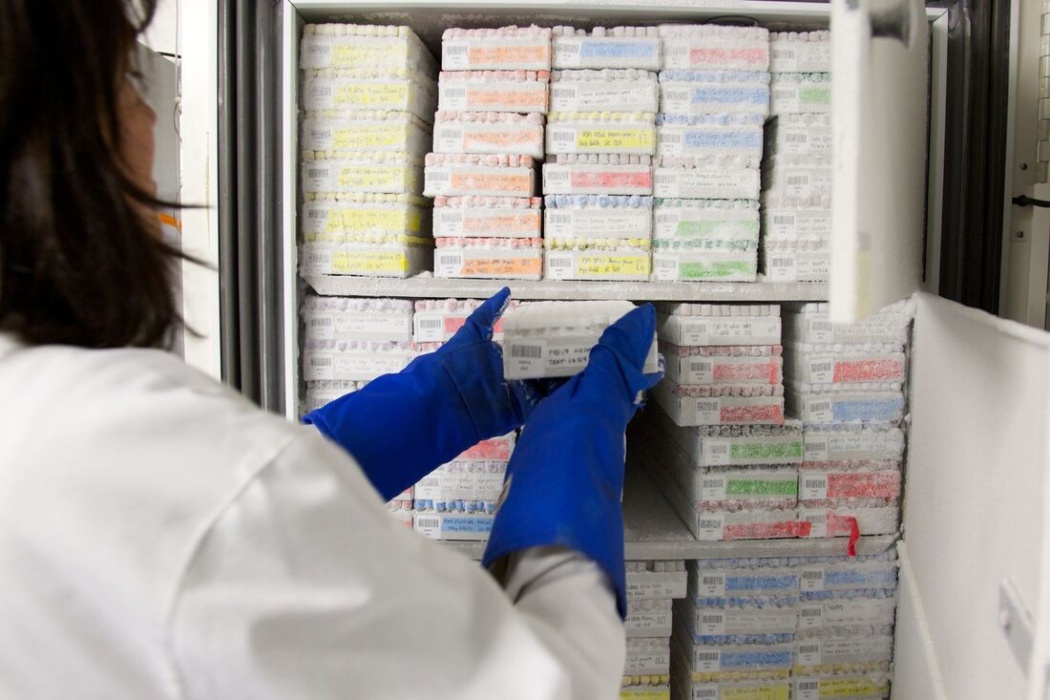
Select a year below to jump directly to blog entries from that competition cycle. Each year tells a unique story of collective climate action in labs.
2017 Blog archive
Discover how nearly 2,000 labs saved over 20 million kWh of energy in 2023.
Jan 2017
The registration deadline for the 2017 North American Laboratory Freezer Challenge has been extended through 1/31/17. Sign up here before it’s too late!
Feb 2017
Blast the Ice Jam
Ice build-up blocks access to samples, indicates a leak gasket, or inhibits freezer performance. Blast the ice jam this month as part of the Freezer Challenge!Clean off the door frame and gasket, and sweep off the shelves.The good news? You don’t always have to do a complete defrost. Here are some quick tips for removing ice:
- Gently remove the ice from around the door gasket using a brush or blunt object
- Never use sharp objects to remove ice from a freezer because you might tear a gasket or puncture a refrigerant line
Brett Dacko from Shon’s Scientific Refrigeration Service says, “If your freezer is working fine, do not defrost it. Just remove the ice and snow buildup from each shelf one at a time and allow the temperature to return back to the set point before proceeding to the next shelf.
“When is it time for a defrost? Defrosting freezers has been likened to cleaning out the garage, except most people prefer the latter. Looking into research freezers, you might think that ice build-up is a good thing. Maybe it ‘proves that the freezer is working’ or ‘insulates the freezer when the door is opened’. In fact, rapid ice accumulation in your freezer may be the result of a leaky door gasket, too many door openings, or neglect… Rather than protecting the freezer, large amounts of ice may force your freezer to have to work harder than usual to maintain temperature, and it may lead to warm pockets because of poor air convection.If you can’t access samples easily, have clear ice build-up, or have more than 1/2 – 1 inch of frost on shelves and samples, it’s definitely time for the Big Thaw.
What’s the best way to defrost a freezer and protect samples?Take care of your samples by temporarily storing them in a freezer with extra space. Some universities even have spare freezers that you can use, just check with your department. You can also put them in coolers or walk-in freezers, pre-cooled with dry ice and more dry ice on top.To defrost a freezer, Dacko recommends “defrosting the freezer for 48 hours with the door ajar, and then restarting the freezer. Sometimes this will take care of temperature issues”, he adds.At the Freezer Challenge we recommend using basins and adsorbent towels placed around the freezer and under the open door to avoid puddles on the floor. We suggest using cloth towels and/or reusable adsorbent pads. Setting up a fan in front of the open door will accelerate the defrost.
Our lab is busy! When will we find the time to do this?Try ‘Freezer Fridays’, an idea conceived by the Michaelson Group at UC Davis. Pick a two-hour block of time to bring the group together for freezer scrape-down, sample cleanout, and eventual defrost. Try this for one month and see what you discover hidden in your frosty freezer…
Bottom line.Removing ice from freezers allows the compressor to work faster, leading to longer compressor life (aka longer freezer life) and reduced energy use. Whether you choose to do a complete defrost, or simple remove the ice shelf-by-shelf, we at the Freezer Challenge award points to labs that do the smart thing and properly maintain their freezers.\
Do you have an ice jam? Send us your best picture of a frosty freezer, and you may win the Frosty Freezer contest! #FreezerChallenge2017
March 2017
Webinar on Energy Efficiency
Ready for Retirement?
We’re halfway through the Challenge, and we thought it would be a good time to celebrate all of the freezers and refrigerators that have been retired as a result of consolidation and space sharing. Considering how much energy these units use (see last week’s blog post), together we’re saving tens of thousands of kWh per year.
What will your lab do with the extra floor space left behind from your retired freezer/refrigerator? Send us your photos – the most creative use of space wins a prize!
Sharing is Caring
Whether it’s a cold treat, or cold storage, sharing is caring! Sharing freezer space can make it possible for your colleagues to store samples while they defrost a freezer. And sharing freezer space long-term can save a significant amount of energy.
- Ultra-low temperature freezers consume an average of 20 kWh/day – as much as a family home!
- -20C freezers consume 6-12 kWh/day
- Refrigerators consume at least 4 kWh/day
If just 5% of cold storage units were shared in the United States, we could reduce the amount of energy equivalent to over 5200 homes. This is equivalent to reducing greenhouse gas emissions by 25 tons.
So this Freezer Challenge, make some space in your cold storage units to share with colleagues – and know that you’re not only helping your friends, but your neighbors across the world as well.
